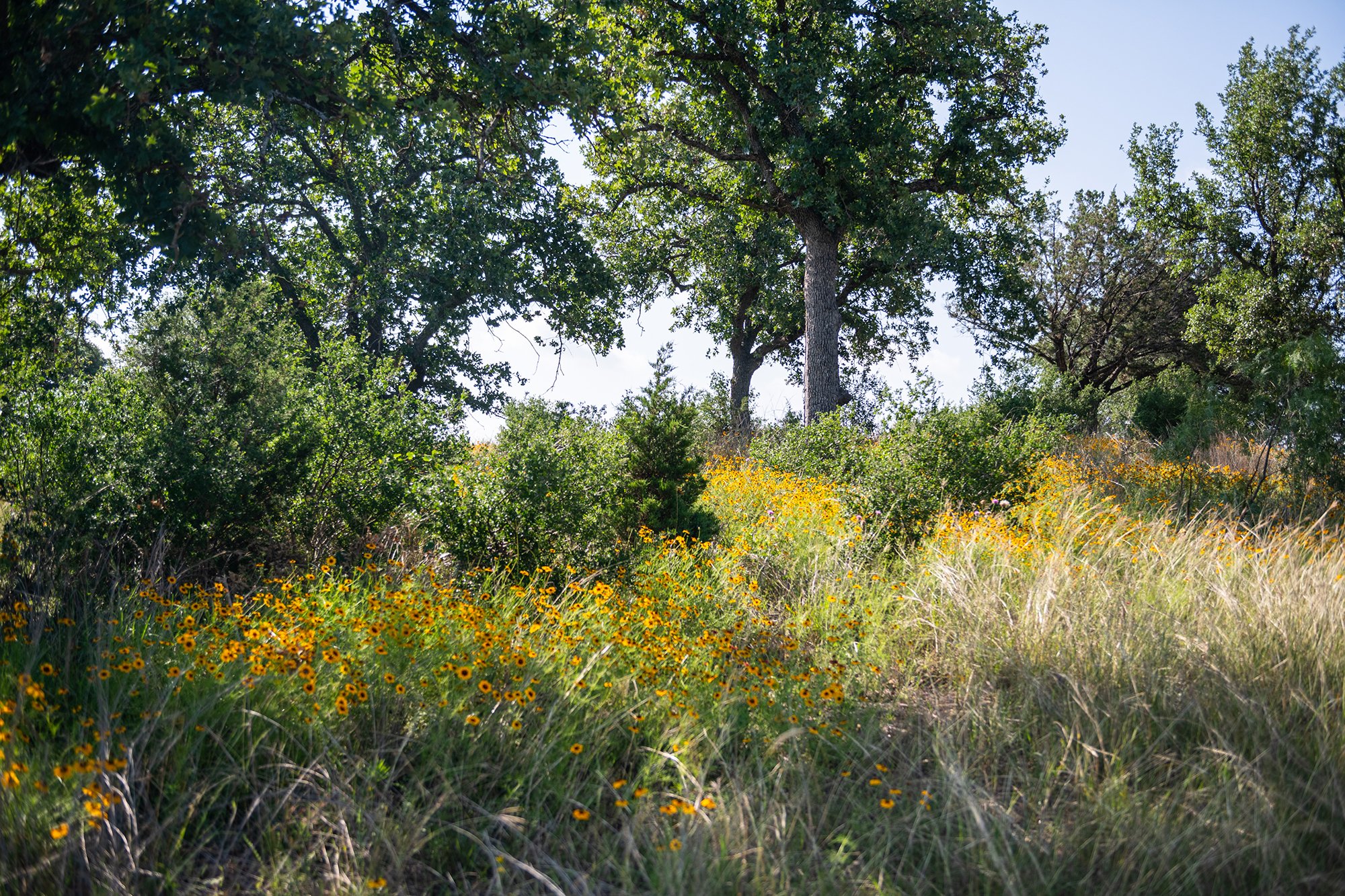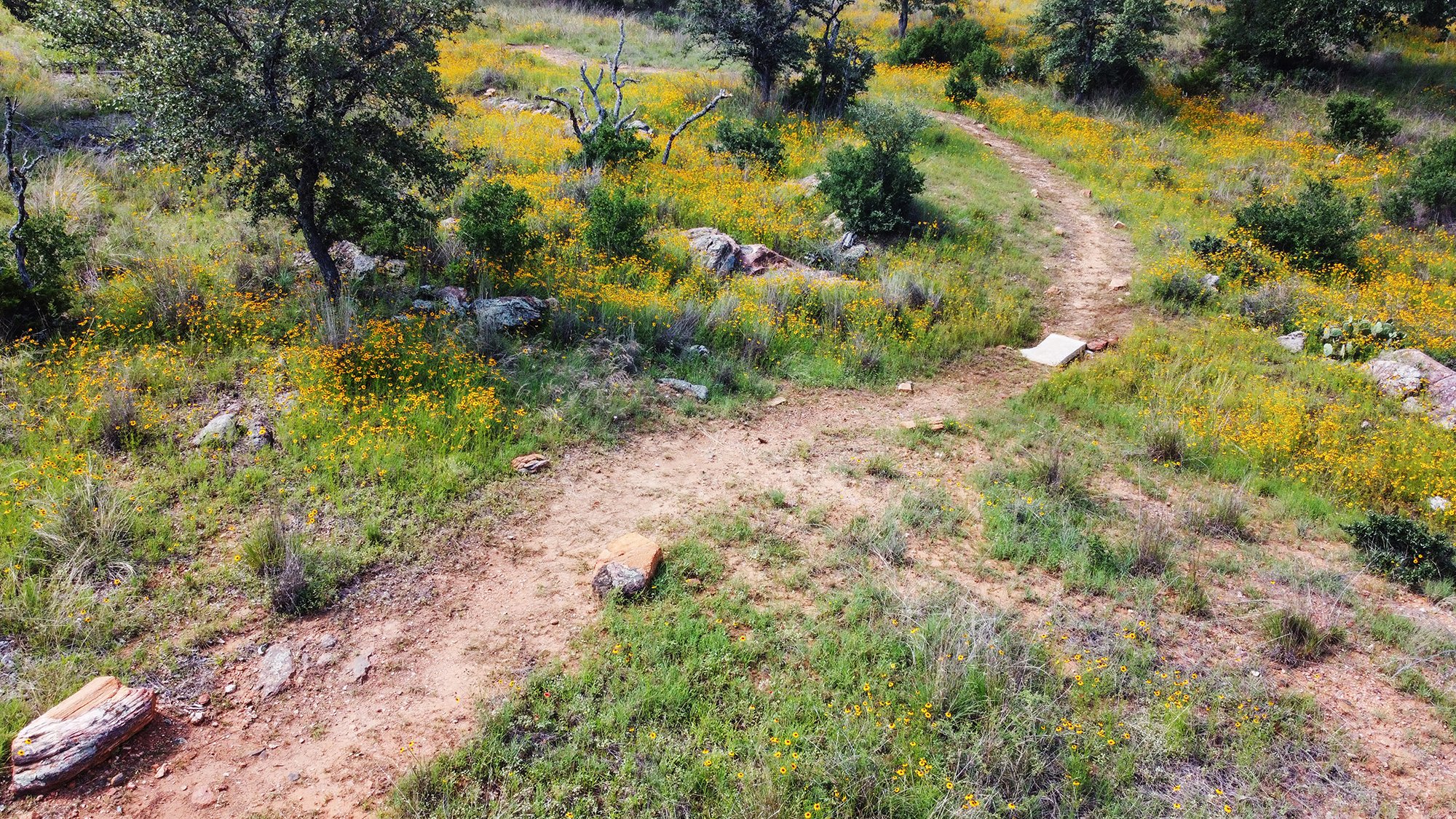The Land
The park features eight ecological zones with different topography, rocks, plants, and wildlife habitat.
Each zone is managed to protect and enhance the biodiversity of the park.
Learn about each zone below:
-
Prairie Grassland
The Prairie Grassland is home to diverse native plant species including Texas bluebonnets, Canada wildrye, little bluestem, prairie parsley, skeleton plant, red lovegrass, gummy lovegrass, green milkweed, coreopsis, and silver bluestem. A contour swale, or slight depression next to a raised berm of soil, prevents erosion and captures precious rainfall to nourish the plants.
-
Oak Mottes
Three Texas live oak mottes, or clusters of trees, are found throughout the park. Each one shelters a unique understory of small shade trees and other plants. A large colony of yarrow flourishes under the oak motte to the west of the Grassy Draw. Near the south end of the Boulder Draw, look for an oak motte with agarita shrubs in the understory. The Ashe junipers growing among the oaks in the heart of the Prairie Grassland attract wildlife by creating dense protective cover.
-
Stony Glade
Brushy Ashe junipers provide dense cover for wildlife in the northwest corner of the park. Amid small granite outcroppings where the Stony Glade meets the Prairie Grassland, look for a colony of Buckley’s yuccas, a food source for deer, butterflies, and moths.
-
Dry Creek Woodland
The low-lying dry creek funnels rainwater from storms into a nearby pond and collects healthy soil, leading to taller trees and lush plant life. Find post oak, Texas live oak, and Ashe juniper trees, as well as grass-leaved rush and Virginia wildrye.
-
Boulder Draw
A shallow ravine with granite outcroppings is home to woolly lipferns, identifiable by their fuzzy silver fronds. Fallen trees and standing snags (upright dead trees) are preserved to provide shelter and food for insects, birds, and animals. Birds like the Eastern Bluebird and Carolina Chickadee build their nests in the cavities of dead trees. Logs on the ground shelter numerous fungi, earthworms, lizards, and toads.
-
Persimmon Thicket
This flat area is home to many Texas persimmons and other thicket-forming species, including agarita and catclaw mimosa. These low thickets provide excellent cover for nesting wildlife, and several species of birds feed on persimmon fruit and agarita berries. As the thickets develop, their shade will suppress the growth of invasive King Ranch bluestem and allow native grass species to recover.
-
Prairie Woodland
The Prairie Woodland includes post oak, Ashe juniper, cedar elm, and Texas live oak trees, as well as agarita, Texas persimmon, catclaw mimosa, and evergreen sumac. As the woodland is protected and restored, it will create shelter, food, and nesting habitat for birds and other wildlife.
-
Grassy Draw
The Grassy Draw is the largest prairie restoration area in the park. Contour swales capture rainfall and retain topsoil to nourish diverse plant species. The sloping, dry mixed-grass prairie provides habitat for ground-dwelling wildlife including lizards, birds, and harvester ants. This native species of ant, threatened by invasive fire ants, is beneficial to the soil, helps distribute native grass seeds, and is a primary food source for the Texas horned lizard. In the spring, the Grassy Draw blooms with Texas thistles, prickly pear cactus, antelope horn milkweed, and other wildflowers, attracting a multitude of pollinators.















